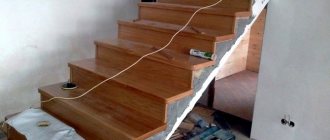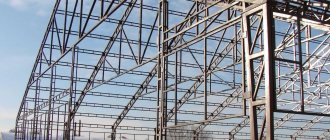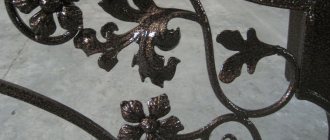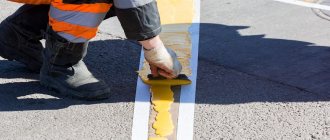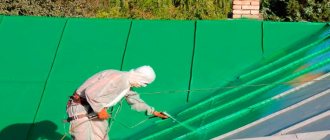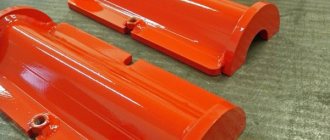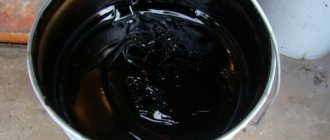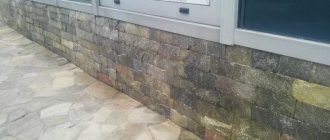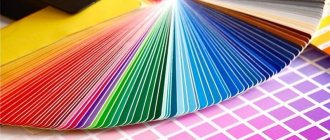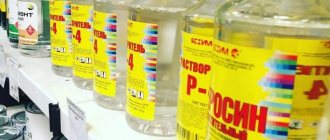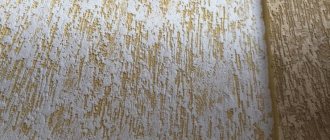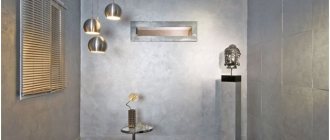Types of varnishes for stair surfaces
Varnish is a solution, after application of which a protective film appears on the surface. It can be matte, semi-matte or glossy.
There are several types of paints and varnishes used when varnishing stairs:
- Alcohol solutions of resins. They are characterized by rapid drying (up to 2 hours) and ease of varnishing. The disadvantage of such paints and varnishes is their low resistance to moisture.
- Nitrocellulose, consisting of a mixture of colloxylin, plasticizer and resin. They are moisture resistant.
- Formaldehyde. They are considered a good choice for stair coverings due to their resistance to wear. This varnish includes formaldehyde resins, which adhere very well to wood. The disadvantage of formaldehyde paints and varnishes is a persistent odor that remains in the room for quite a long time.
- Alkyd. Despite deep penetration into the wood structure, such paints and varnishes are not resistant to mechanical loads. Very soon the surface wears out, so only stairs that are not used very often can be treated with alkyd varnishes.
- Water-based paints and varnishes. They can be one-component (including acrylic) or two-component (acrylic and polyurethane). Water-based varnishes, especially two-component varnishes, are well suited for stair surfaces.
- Solvent-based coatings. Two-component polyurethane varnish based on organic solvents is the best choice of all available options in terms of coating reliability.
Alkyd varnish is not very suitable for stairs because it does little to protect the wood from external physical damage
Shapes and sizes
Larch is a material that does not have a very low cost, so before manufacturing and installing a staircase, it is recommended to develop a project and accurately calculate the amount of wood required for the work. Otherwise, damaged and extra pieces of wood will increase the final cost. In addition, accurate calculation of dimensions will facilitate the assembly and installation of the finished product.
The staircase includes such elements as a landing, a step, a riser, a baluster, a bowstring and a handrail. All of them are basic components for any staircase. The material is divided into 2 grades: extra and A. They include solid-lamella and jointed boards, respectively.
Steps both from spliced larch and from solid larch most often have standard sizes: 40x300x1000, 1200x300x40, 40x600x1400, 40x600x1500 millimeters. There are corner and winder steps of the stairs. They are necessary for organizing turns. Such elements are located in the corner and have a diamond shape. They can be used instead of platforms, which saves space.
When creating a project and purchasing material, it is important to consider the required number of such elements. With an L-shaped staircase, you will need 1 corner and two winder steps. If you plan to install a U-shaped staircase, the number of steps increases. In this case, 2 corner and 4 winder elements will be required.
Types of varnishing stairs
There are two types of varnish for stair coverings: opaque and transparent.
An opaque coating is achieved by applying appropriate types of paints and varnishes to the stairs. They will hide wood defects. Moreover, opacity is achieved not only through a special varnish, but also through the application of several layers of material. If the choice is opacity, and the surface was previously covered with varnish or paint, it is necessary to remove the old coating. Then carry out priming and puttying, and only then can you start varnishing.
The transparent coating is ideal for wood with a beautiful structure and no defects. Typically, stair structures made of oak, beech and exotic tree species are treated with opaque varnish. Putty is needed here only to mask some minor defects. The general rule is to apply paintwork to a clean, dry surface, so that there is no spreading of the material.
Note! Different types of varnish differ in their degree of toxicity. However, in any case it is necessary to use a respirator, protective gloves and goggles. The room must be ventilated.
Clear varnish highlights the beautiful grain of the wood
Criteria for choosing varnish material
The staircase structure consists of the working surface of the steps and other parts. These two main components experience different loads.
The steps are subject to wear load. If the protective layer on their surface is weak, then the heels will leave marks. This is because pine is characterized by low wood density.
Handrails, the back of steps, and fittings are practically not subject to load. Therefore, the applied varnish for the stairs in this case will perform decorative and protective functions (from moisture and rotting).
Instructions for applying varnish
To perform varnishing you need:
- bristle brushes (for liquid compositions);
- round hair brushes (for thick paintwork);
- varnish;
- turpentine.
Advice! If the paintwork is of liquid consistency, the length of the bristles should be twice the diameter of the brush. If we are talking about thick compositions, the pile, on the contrary, should be shorter.
Even before starting work, the brush should be dipped in varnish and then cleaned in turpentine.
Step-by-step instructions for varnishing stairs:
- we clean the staircase surface from the old layer of paint or varnish;
- remove dust;
- if necessary, prime and putty the surface;
- stir the varnish;
- when applying paint and varnish, hold the brush perpendicular to the surface being treated, and not at an angle;
- First we apply the varnish in wide stripes, and then we level the applied layer;
- We make sure that no lint remains on the surface and, if necessary, remove it;
Advice! It is recommended to stir the composition not only before starting work, but also during the process. It is important to prevent large particles from settling on the bottom.
During varnishing, periodically rinse the brush in turpentine.
Beautiful examples
- A larch staircase can be an excellent design option for a three-story house.
- Two-color staircase. To add zest, carved railings were used.
- Beautiful staircase made of larch. U-shaped option.
- L-shaped option.
- U-shaped staircase made of larch, made in two colors.
For an overview of the larch staircase, see the following video.
Useful tips
- It is more convenient to apply varnish to the stairs when the structure is disassembled, especially if different shades are planned.
- Only special wear-resistant types of varnishes are suitable for stairs. Stair varnishes are thicker than parquet varnishes (which is very convenient when varnishing with a brush). They spread less and are characterized by increased strength. However, these types of paints and varnishes are more expensive. Moreover, you can’t buy such a varnish in every store - after all, the demand for such compositions is not so great.
- If it is not possible to purchase a special staircase paint and varnish, you can opt for a high-quality parquet composition.
- Paintwork materials based on organic solvents (optimally two-component polyurethane) are preferable to a water-based composition.
- As for manufacturers, it is better to choose varnish from a well-known European company. Finnish, Swedish and German companies have proven themselves well in this segment.
- Staircase - refers to structures with increased surface wear, so when choosing between glossy, matte and semi-matte options, it is better to choose the latter, since signs of wear are least noticeable on it.
- If you need to tint wood in a dark color, it is more correct to use not colored varnish (despite the fact that it is easier), but to use a stain and then apply a transparent paint coating. The point of the recommendation is that the stain penetrates the wood to a couple of millimeters, and even when the surface wears out, its color remains the same. When the need arises, it will be enough to simply apply a colorless protective layer. But if the surface is varnished with colored varnish, then after erasing it, bare wood will appear, and the steps will have to be sanded again. Otherwise, the tree will become stained.
Note! You need to buy stain only imported and for professional purposes. Such compositions are rarely sold in hardware stores (since they are usually used in furniture factories) and their cost is high.
- When choosing a shade, you should be careful, since the varnish on the demo sample may have a slightly different appearance compared to the staircase. Therefore, first (for testing) it is worth buying paintwork materials in the smallest packaging.
Advice! The stain can be either liquid (if it is based on alcohol) or thick or even in the form of a gel (if made with water or an organic solvent). It is more convenient to work with a thick consistency, but alcohol stain is absorbed deeper, which is especially important for such an intensively worn surface as a staircase.
Which coating is best for pine
A beginner in carpentry may wonder what to choose for coating: staircase varnish or enamel. It may be easier to treat the entire structure with stain or stop at applying impregnation.
One stain will not be enough to treat a pine surface. As a coating, it does not provide a barrier to moisture penetration. The tree becomes loose over time. For pine, stain is a material for tinting. It penetrates into the wood, emphasizing the texture. Even if the varnish coating is worn out, the stain will help preserve the color of the entire wooden structure for a long time.
You can protect pine from moisture penetration and other unfavorable phenomena by impregnation. But staircase oil and wax coating are not able to protect steps from mechanical damage. On steps treated only with oil or wax, walk only barefoot or in slippers. Impregnation is used as an antiseptic and fire retardant.
If a wooden staircase is made of low-grade wood, then the top layer is enamel. It masks putty knots and cracks. The coating tolerates mechanical damage. Heavily diluted enamel can also emphasize the pattern on the surface. In this case, this layer is treated as a shading. At the finish, varnish is applied in 2 layers. In this case, all preliminary work on preparing the wood is carried out in strict sequence: cleaning, puttying, priming.
You can transform a staircase made of pine without defects by choosing varnish for processing. It will give the appearance a nobility, highlighting a beautiful textured pattern. Pine that is too light is tinted with varnish.
Are impregnations necessary?
Their main function is to give the wood special properties, thanks to which it will not deteriorate and be destroyed under the influence of external factors.
Impregnation penetrates into the wood structure and gives it a velvety shade.
Impregnations are presented in the form of a liquid that easily penetrates the structure of the material without creating a film on its surface.
The market offers a wide range of impregnations that differ from each other in composition, properties and purpose. When producing a protective agent, water, nitrocellulose or organic substances are used as a basis.
Impregnations are used for various purposes. Depending on this they are:
Recently, more universal impregnations have begun to appear on sale, which perform not just one, but a number of functions.
Preparatory work
- First, all existing construction debris is completely removed.
- If necessary, wash the levels and elements of staircases.
- Dry it.
- Assess the need for puttying and grinding work. They are performed if necessary.
Prepare the surface for finishing work.
Attention! If puttying is done, you will have to wait at least 48 hours for the solution to completely set. Then the excess is removed with abrasive materials and the surface is ground. It happens that such operations are performed several times.
What to pay attention to
The criteria for choosing a certain type of paintwork for a wooden staircase are as follows:
- Floor load. If the stairs to the second/third floor are often used, then a wear-resistant coating is chosen.
- Tree species. Pine floors can and should be painted; larch boards have a beautiful pattern, so it is better to choose a colorless or tinted varnish.
- Availability of ventilation. The staircase, as a rule, is located near the entrance area, which means there should be no problems with ventilation. Therefore, you can choose any LMB.
- Price. The issue of saving is especially important if a lot of money has been spent on repairing or building a house. In this case, you can choose cheaper paintwork materials for the stairs, but not at the expense of the quality of the finished coating.
